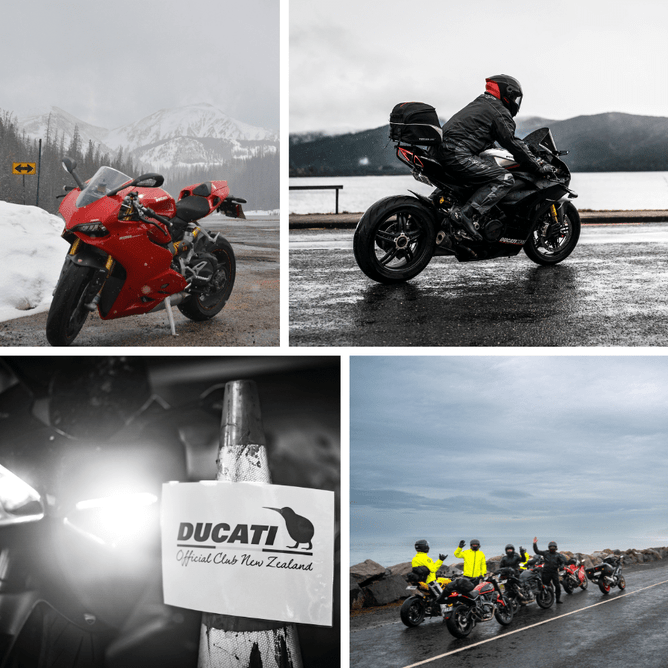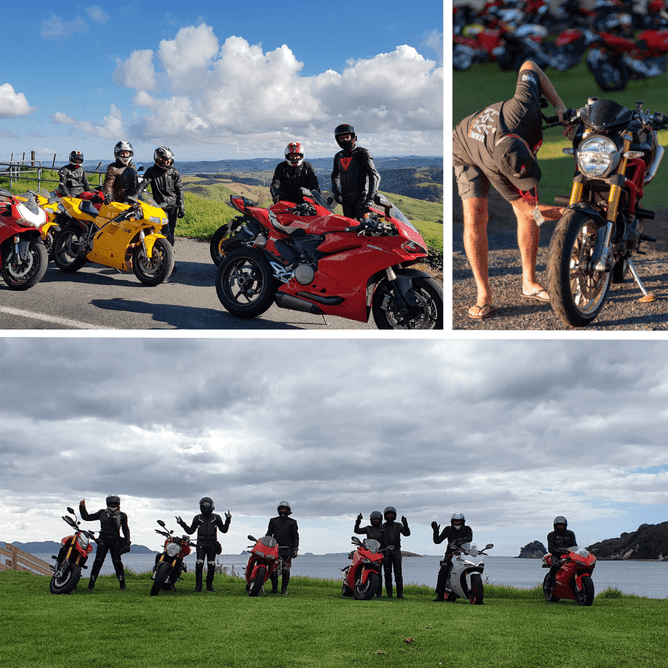That’s the question I’ve been tasked with wittering on about this month.
I don’t own a car, and Sunday being my day off, I usually have the displeasure of driving, but luckily, I have my lovely wife and son for company.
Having no option other than two wheels has led to challenges, revelations, dicey moments, and a lot of learning. I’m here again this month to share some of that with you all.
First of all, you will need to decide if you’re going to park the bike up or carry on through the winter months. The reasons for or against can be many, and all are valid. Ride your own ride is applicable here; I’m just trying to help it be as smooth as possible.
Hide It
You’ve chosen to park the bike up for the winter. Fair play. Let's look at some things you can do to make sure it’s ready to rumble when the temperatures start to climb again.
Oil and brake fluid degrade over time. Definitely plan to service the bike after the winter months instead of before; this will help keep things in the best shape possible for the warmer months.
Tyres pumped up to the max psi on the sidewall will help them keep their shape while stationary. Better yet, use front and rear stands to keep the flat spots away.
Charge the battery and disconnect it, or leave it on a trickle charger.
Fill the tank with fuel; less air gap means less moisture. The fuel won’t degrade a noticeable amount over the 3 to 4 months, so you’ll be ready to go for that next ride.
Clean and lube the chain; this is more for corrosion protection while stored.
Cover the bike, making sure it’s breathable so moisture doesn’t collect underneath.
A bit of WD40 on the fork stanchions wouldn’t hurt either.
Great time to do a bolt check too!
A list of post-winter checks to place on the tank would be wise, with tyre pressure being a key thing to adjust. If you choose to store it, don’t start it until it’s going to be ridden. You’ll do more harm than good by allowing any moisture in the oil to evaporate and condense again by starting the bike up.
Ride It
No different to summer as far as the bike's concerned; the rider is the main failure point in winter riding. Here are a few things that help me stay warm and dry riding through the winter.
Always carry wet weather gear with you. I use a piece setup over the top of my gear; this works well for me, and it’s often on when the temps get really low, making use of the windproof factor more than the waterproof one. Laminated Gore-Tex gear is the ultimate, but it can be pricey.
Heated grips and heated gloves. Both have pros and cons, and many factors will help decide what’s right for you. Go and try each, and ask those that use them what they think and why they use them. For me (half an hour each way to work), the gloves are perfect. They switch between bikes, unlike grips, batteries last me all week, and they keep the outer parts of my hands warm.
Base layers are useful, not only keeping you warm, but most will wick away moisture to keep you from sweating when you stop. Also, a compression factor is great on longer rides to help with fatigue. Another base layer I like to use on a mild winter day's ride is latex gloves under summer gloves. These cut the wind chill right out, allowing the summer gloves to go down to colder temps a bit better.
Whatever you choose to do, remember, these are just my thoughts based on my own time in the saddle. At the end of the day, whether you brave the cold or hibernate your bike for a while, it's all about what suits you!
✍️ Dan Bloxham


